Bed bug skin casing can be scary when you first see them. Unfortunately, many people confuse them with dead bed bugs.
The reality is that bed bug casings should scare you. When you see bed bug casings, this is a sign of a growing and maturing bed bug infestation.
Don’t worry. I’m here to help. In this post, I will go over everything you need to know about bed bug skin casings and what you should do next.
Let’s get started.
Why Do Bed Bugs Shed Their Skin?
Bed bugs shed their skin or exoskeleton so that they can grow. Once they can no longer grow in their current skin, they will begin to molt. Molting is a process that many insects go through as they mature from a nymph to an adult.
During the molting process, bed bugs remove their exoskeleton and leave it behind. If a bed bug does not molt, it will stop growing, and it won’t reach adulthood.
When Do Bed Bugs Shed?
Bed bugs shed five times during their life. Each stage brings them closer to becoming a mature adult that can reproduce. However, once bed bugs reach adulthood, they no longer shed their skin.
Nymph or young bed bugs will shed shortly after they have a blood meal. This happens because bed bugs need the protein and amino acids inside human blood each time they shed their skin.
Before shedding, bed bugs start growing a new exoskeleton under their current one. When they shed their skin, their exoskeleton is still weak.
You can identify a bed bug that has just shed its skin is by the white or transparent color. In contrast, bed bugs have been in their skin for longer than several days, and adult bed bugs typically have a light brown to dark brown color.
How Often Do Bed Bugs Shed Skin?
Bed bugs molt five times during their lifetime. They tend to shed their skin every seven to ten days.
The weather can have an impact on how frequent bed bugs molt. When temperatures are high, bed bugs tend molt faster than during colder temperatures.
In warmer temperatures and a consistent food source, bed bugs can molt every 3-5 days.
Do Adult Bed Bugs Shed Their Skin?
No, adult bed bugs don’t shed their skin. After reaching adulthood, bed bugs no longer shed because they will not grow anymore.
It is not uncommon that non-adult nymphs such as those in the fifth instar stage are often confused with adults. However, as a rule of thumb, if the bed bug is molting, then it has not reached adulthood.
Do Bed Bugs Shed Their Skin?
Yes, bed bugs shed their skin. This process is called molting. Many insects molt as a way to continue growing. They expel their current exoskeleton and grow a new larger skeleton that will allow them to grow. Only nymph bed bugs shed their skin while adults no longer grow.
What Are Bed Bug Shells & Casings?
Bed bugs casings and shells refer to the remaining exoskeleton after bed bugs shed their skin. The shells or casing often look like an empty bed bug.
The terms shells and casings are often used interchangeably.
What Do Bed Bug Shells Look Like?
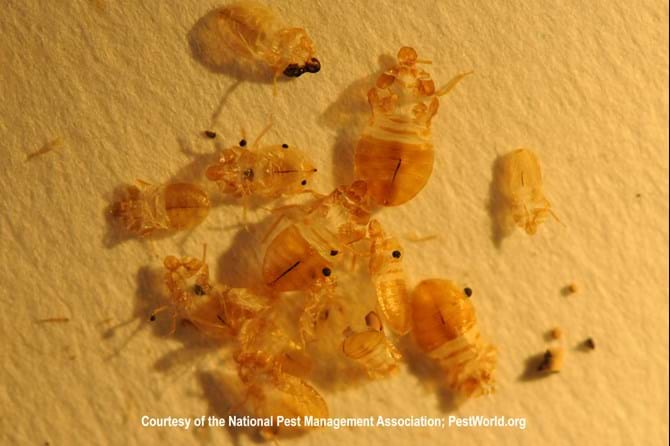
Bed bug shells look like empty casings of a bed bug. I refer to casings as empty bed bugs. They are the exterior of the bed bug without the actual bed bug inside.
Bed bug casings can vary in size depending on what stage of life the bed bug is in. During the first stage, the shells are the largest. In contrast, during the fifth stage, bed bug shells are the largest.
Below is a reference of the different size shells bed bugs leave:
● 1.5 mm – first stage
● 2 mm – second stage
● 2.5 mm – third stage
● 3 mm – fourth stage
● 4.5mm – fifth stage
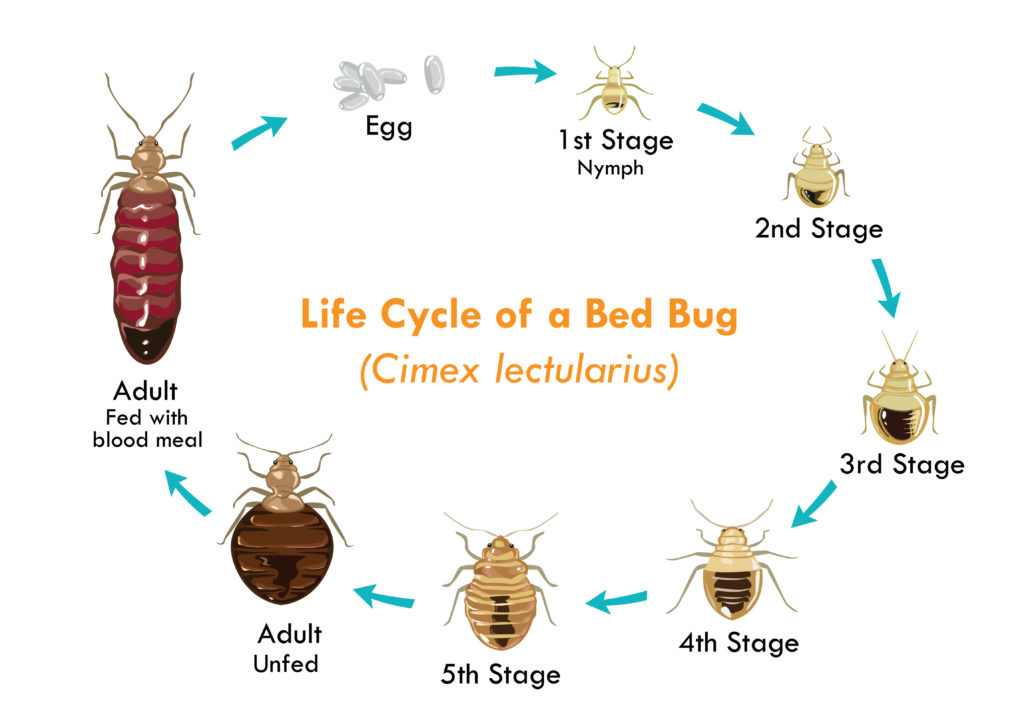
Where Are Bed Bug Casings Normally Found?
Where you find bed bug casings will depend on your home and the severity of the infestation.
You will typically find these casings where bed bugs are hiding. This tends to be near a host or where their host sleeps.
In large infestations, its possible to find them all around your house.
Some of the most common areas you’ll find bed bugs casings include the headboard, mattress seams, or in other small crevices inside bedrooms.
The following places are typical hiding places bed bugs hide and where you are likely to find their skin casings:
- Walls
- Carpets
- Within couches
- Mattress folds/seams
- Pillow/bed covers
- Near/inside (wooden) box springs
- Beneath box springs
- Beneath mattresses
- Couches/beds/lamps/chairs
- Nightstands
- Window sills
- Curtains/drapery
- Behind hanging material
- Bed frame gaps
- Wall holes
- Floorboard crevices
How To Find Bed Bug Casings
Locating bed bugs and bed bug casings in your home means using the proper tools. They don’t necessarily need to be super pricey in order to get the job done.
You will need the following equipment to help you.
Gloves
Using gloves will save you from directly touching bacteria, blood, droppings, and even living bed bugs. This is critical during the inspection process.
Flashlight
You’ll need a flashlight to see hidden bed bugs in tiny cracks, folds, and seams.
Magnifying Glass
A magnifying glass will help you locate what you can’t see with merely the naked eye. Be prepared for bed bug eggs and tiny bed bugs during this inspection.
Collection Containers
Have collection containers for storage and identification purposes. This is critical for determining which types of bug species are infesting your home.
Forceps or Tweezers
Tweezers or forceps are critical for nabbing these insects and setting them within the collection containers.
Metal Probe or Credit Card
Credit cards and metal probes are great for getting bed bugs out of typical hiding places. At this point, you can contain or kill these insects.
What Color are Bed Bug Shells?
Bed bug shells are typically transparent. Some bed bug shells will have some patches of dark or light brown.
Typically, you will see some tint of brown on the shells. The tint of brown comes from residual stain after feeding on human blood.
What Do Bed Bug Shells Feel Like?
Newly release bed bug shells are easy to smash. Their texture is similar to fingernails but slightly softer. The resilin inside the bed bug shells allows for movement, extension, and stretching.
When bed bug shells are old, they become bridle. The older they are, when you touch them, they begin to break and become powder.
What to Do If You’ve Found Bed Bug Casings
If you find bed bug casings inside your home, this typically means that you have a bed bug infestation. Bed bug casings are a sign of a maturing population and adults able to reproduce.
If you find bed bug shells, you should inspect your home for live bed bugs. You want to identify the severity of the infestation and then determine what treatment methods work for you.
If you have a large infestation, you should seek professional assistance.
Are Bed Bug Casings Hard or Soft?
Bed bug casings are technically hard. When they fist release their exoskeleton, you will feel how hard and flexible that exoskeleton is.
As the exoskeleton decays and spends more time outside it will begin to dry out and become brittle.
Do Bed Bug Casings Have Legs?
Yes, bed bug casings typically do have legs. Although, it’s common for the legs to break off over time. This is especially true when the casings are left somewhere that sees plenty of activity, such as mattresses.
Pictures of Bed Bugs Casings, Skins, and Shells
Below are some images of bed bug casings to help you identify the difference between dead bed bugs and skin casings.
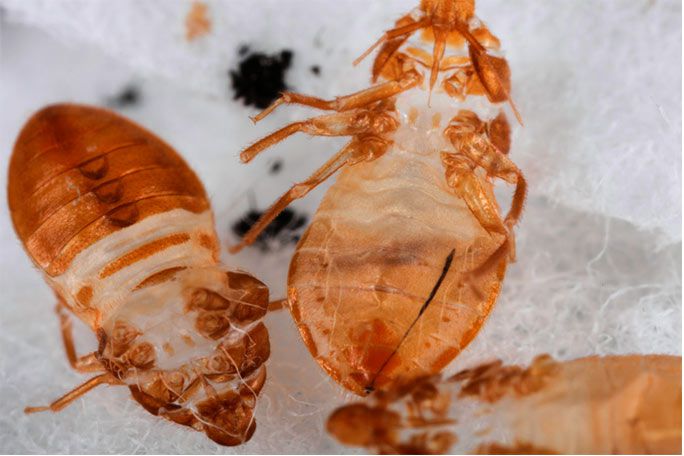
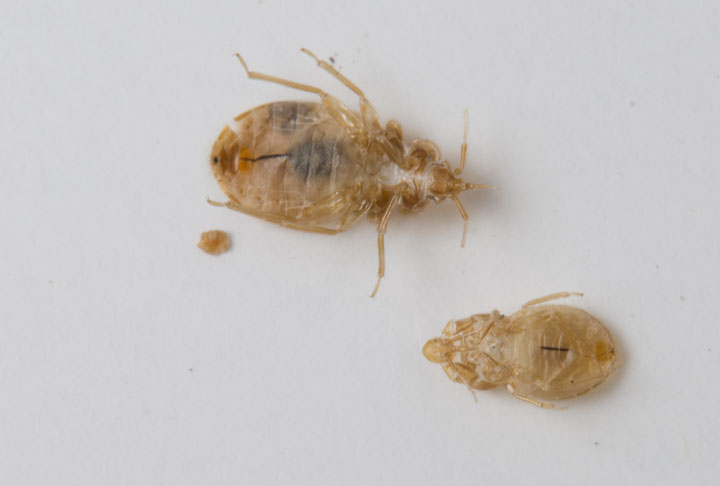
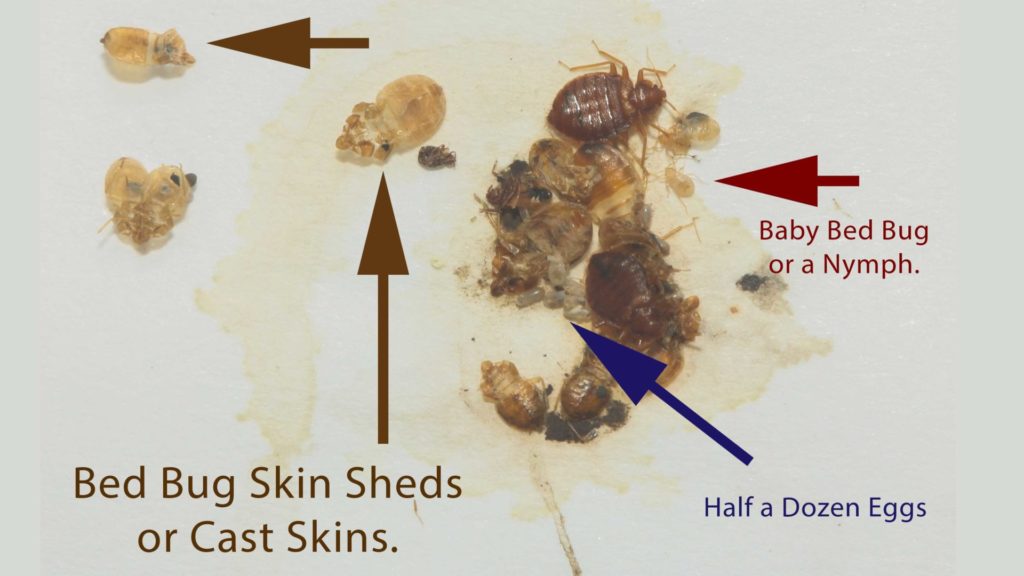
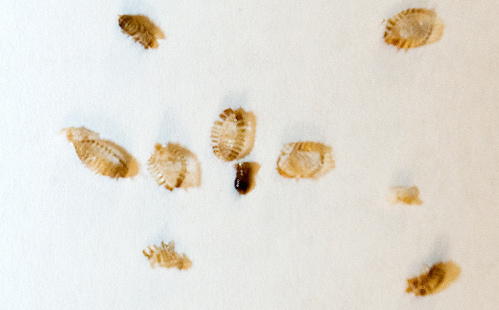

How to Treat A Bed Bug Infestation?
There are several different ways you can treat bed bugs.
Common treatments include:
- Washing, Steaming and Vacuuming
- Heat Treatment
- Mattress Encasement
- Fumigation
- Chemical Insecticide
1. Washing, Steaming, and Vacuum Treatments
This treatment process involves washing all fabrics, sheet covers, and drapery where bed bugs are located.
Items need to be washed on hot and dried on high temp to kill any bed bugs hiding inside.
The second step is using a steamer on all major furniture where bed bugs are hiding.
Steamers can reach temperatures up to 180 degrees Fahrenheit which can kill bed bugs instantly.
Using the steamer to steam all major hiding places for bed bugs.
The final step is to vacuum up all crevices, folds, and seams where bed bugs hide.
This does two things:
- It picks up any dead bed bugs.
- Removes any remaining bed bugs that the steamer missed.
Vacuuming is an excellent way of removing a large number of bed bugs, eggs, and shells skin quickly.
2. Mattress Encasement
Mattress and box spring encasements can be a great way to control bed bugs.
Encasements create a barrier between you and the bed bugs living in your mattress.
They are great if you are looking for an inexpensive and quick solution for your bed bugs.
Encasements are also great to use if you do not want to dispose of heavily infested mattresses.
3. Fumigation
Fumigation treatments release fumigant gas into bed bug-infested areas to control bed bugs in all life stages.
The great thing about fumigation is its ability to penetrate areas that are difficult to access, such as tiny folds, seams, and intricate fabric.
That said, fumigation requires extensive preparation.
You’ll need to vacate all living things in your home until all traces of the fumigant have dissipated.
Fumigation also requires professional assistance, which can be costly.
You can fumigate smaller furniture or items using DDVP strips in air tight containers.
4. Chemical Insecticide
When using insecticides, make sure to read and follow all label instructions.
Pay special attention to what type of furniture, surfaces, and materials is the insecticide safe to use
You’ll also want to pay attention to how long it takes before re-application and follow accordingly.
Signs of A Bed bug Infestation
Some of the most common signs of bed bug infestation are:
- Live Bed bugs – Bed bugs are about the size of a grain of rice, oval, flat, and light brown to reddish-brown.
- Bed Bug Eggs – Bed bugs are smaller than a grain of rice, white and are oval.
- Dried Blood – Small specs of fresh blood will look like dark red dots around your couch.
- Skin Casings – Bed bugs shed their skin to grow. The presence of these skin cases is a good sign of bed bug infestation.
- Bed Bug Bites – Bed bug bites look like welts and do not have a red spot at the center, unlike other insect bites such as spiders and fleas.
Bed bugs tend to hide in groups or near each other.
This is typically in undisturbed areas around your bedroom or other parts of your home.
They tend to hide near their host to make feeding as easy as possible.
This is why they tend to hide in seams, crevices, and folds in the fabric, furniture ,and drapery.
The most common locations bed bugs hide are in bedrooms or where humans tend to spend a lot of time.
During the day look for bed bugs in the following locations:
- Mattresses seams and folds
- Underneath mattresses
- Under box spring
- On box spring seams and fold as well as inside box springs, especially on the wood.
- On wood crevices on box spring
- Bed covers
- Pillow covers
- Drapery and curtains
- Small crevices or gaps on the bed frame
- Dressers and nightstands
- Other furniture near beds or couches
- Lamps
- Walls
- Behind hanging pictures and other hanging items.
- Holes or crevices on walls or floorboards.
- Inside couches
- On carpet
- On chairs and other furniture
- Window sills
Resource: How To Find Bed Bugs During The Day
